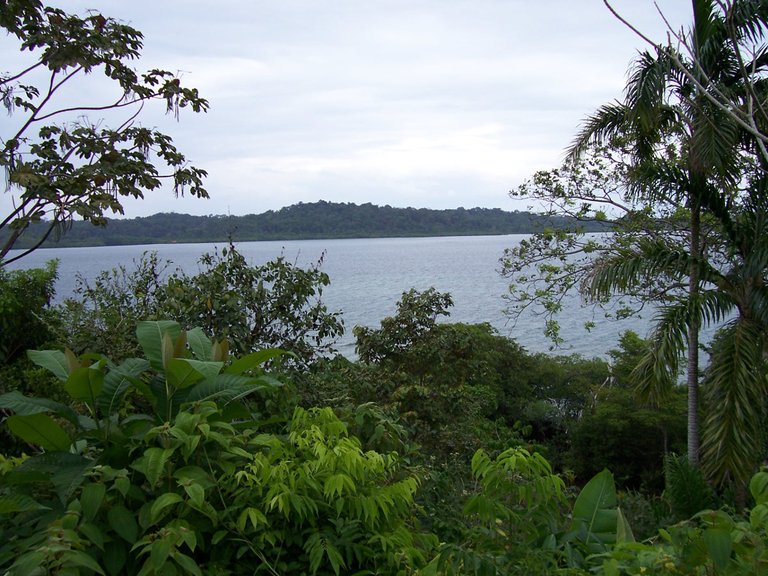
We landed, and the prop plane taxied up to the small terminal. Progress, I guess - the terminal had replaced a rustic little bungalow. On my first trip, I had claimed my bag and stepped through the bungalow door, surprised to find myself in the town. Now the terminal is a tiny bit further away.
This is Isla Colon, the main island in the archipelago of Bocas del Toro which translates to "mouths of the bull." It's the most accessible island and the most populated since the bulk of the population live in its town. Now I have to explain a naming peculiarity. Bocas del Toro is also the name of the province, an administrative district and the name of this town. Confusing, right? When most visitors talk of Bocas del Toro, they mean the archipelago.
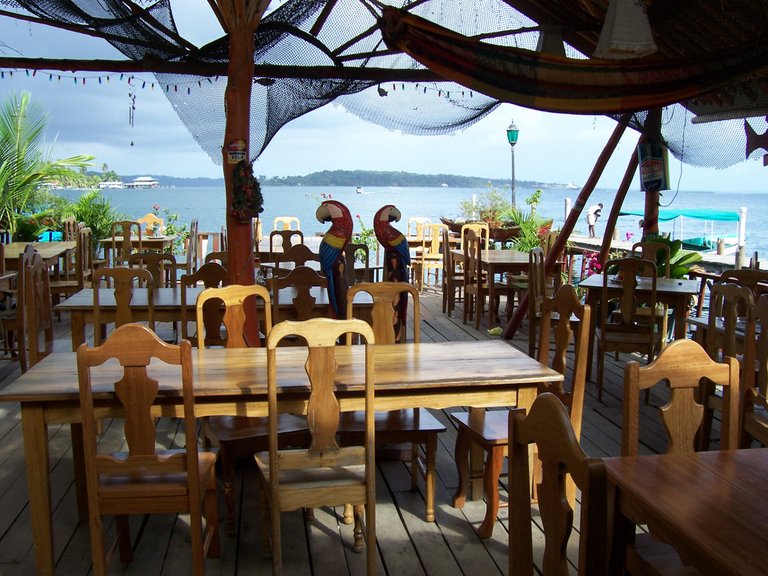
Located on the northwest shore of Panama, it's not too far from the Costa Rican border. It consists of 9 large islands, about 200 tiny islets and 50 cays. It's pretty remote and there aren't many ways to get here. You either fly from within Panama or from San Jose, Costa Rica, or you come by boat. That includes a regularly scheduled ferry from Almirante on the nearby mainland. An hour earlier, my flight had departed from the Albrook Airport in Panama City.
Bocas Town
You walk out into the sultry air in this old town that the locals call "Bocas Town." Now old is a relative thing. I'm not referring to when Christopher Columbus "discovered" the area in 1502, or when 17th century pirates were said to inhabit it. Bocas Town is an old wooden town with some buildings dating to 1905. It was founded in 1826, but earthquakes in 1917 and 1991, and a fire back in 1904 meant virtually nothing older than 1905 remains. But when you walk around, you have to admire the elaborate old wooden buildings that date to the time when this was the banana capital of Panama and United Fruit had its headquarters here. Much of the furniture you see is also made locally.

With a rainforest climate, it's certainly ideal for bananas. It's not great for wooden buildings so there is much upkeep involved. Take a look at a few of them.
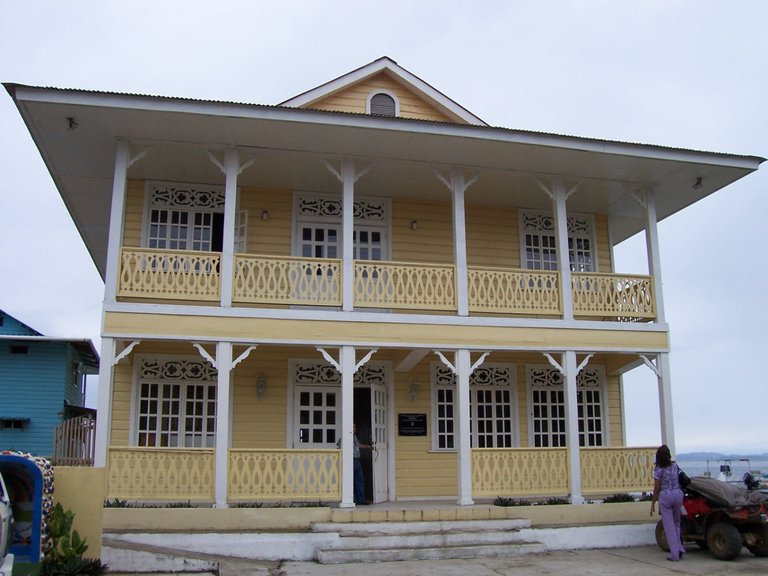
While I was there, the water and air were both 89.6°F (32 C) with high humidity. Most days, there was some light rain and the rain was warm. In the days before electricity and air conditioning, the locals found ways to keep their homes cool. Homes of the indigenous people were sometimes built on stilts to catch the breeze but many buildings in Bocas Town are built over the water. That helped keep them cool. Luckily, the town is sheltered from large waves! And don't worry, they have air conditioning now.
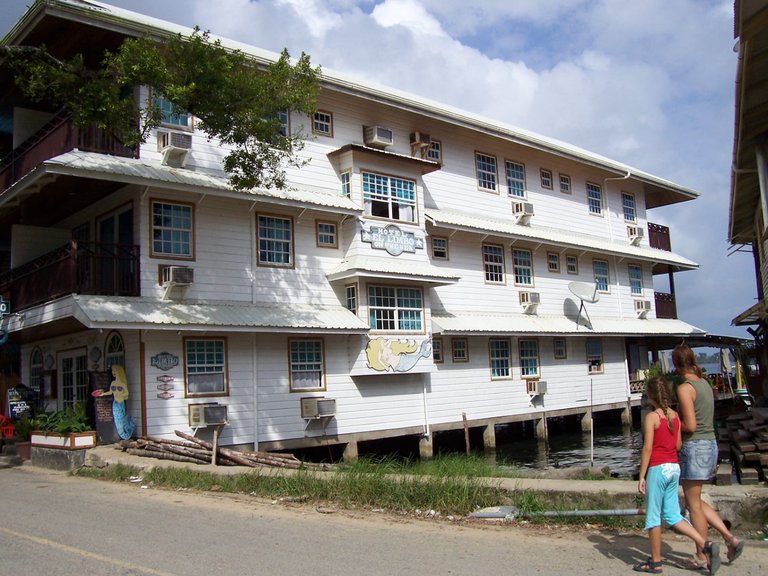
If you're going to visit, you better like boats, the only means of transportation to other islands. Just walk over to the water and hail a water taxi. Anyone can point out the main taxi dock to you. You need to see Bocas Town from the water to appreciate this water culture, and it's always cooler in a boat.
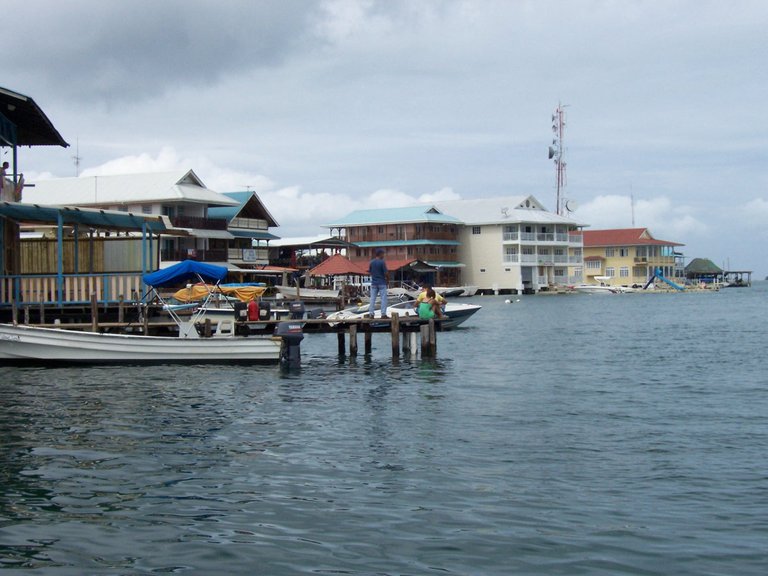
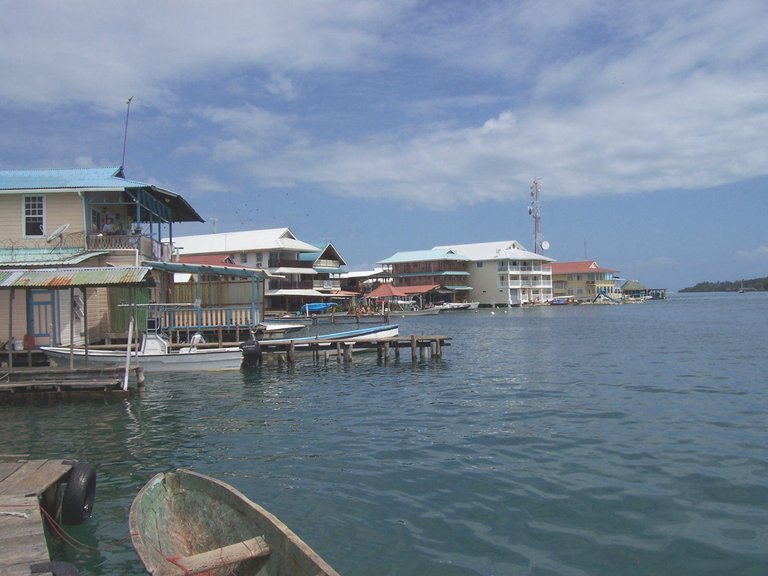

The population of the islands had passed 13,000 in 2012 with the majority living in town. You wonder where they are all hiding until you show up during Carnival which is celebrated every February during the 4 days leading up to Ash Wednesday. If you plan to visit then, book your room well ahead of time.
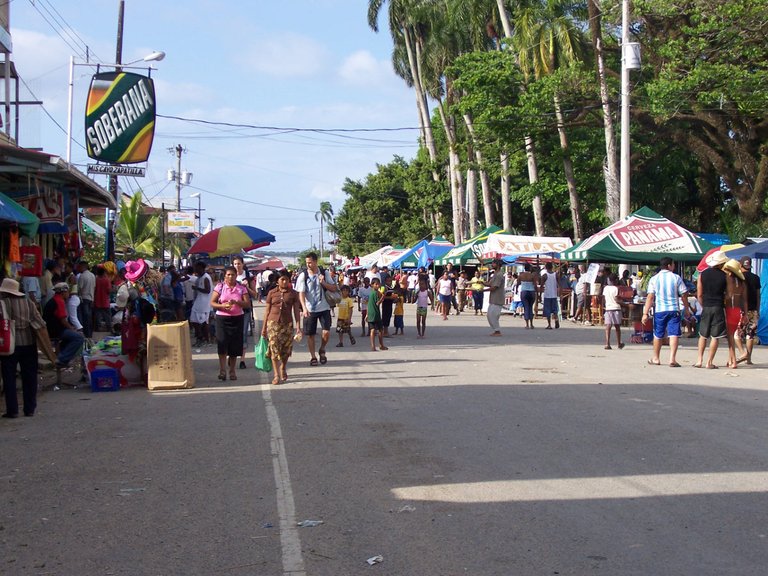
You see every form of transportation.

This photo to the right is of a Diablo Rojo, a red devil. Apparently, it's a bit of an honor to dress up as one during Carnival and there were several wandering around. By the way, that's also the name given to the buses in Panama City!
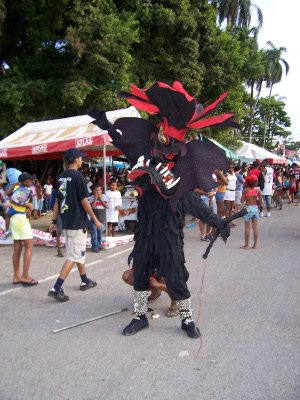
The indigenous people of the islands are the Ngöbe-Buglé indian people. Afro-Caribbean workers were brought from the English-speaking islands of Jamaica, San Andrés, and Providencia to work on the banana plantations, and now many Americans and Europeans are coming to stay. Because the banana plantation workers were English-speaking, English is more common here than in other parts of Panama. There is quite a bit of Spanish and the indigenous languagages as well.
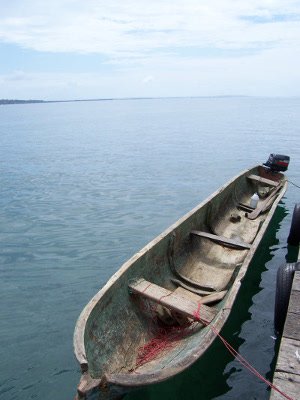
I once watched as two fishermen stood fishing from a cayuco at sunset, their bodies mere silhouettes in the dusk. For how many decades had that scene been repeated... and then one of their cellphones rang! Cognitive dissonance returned me to this century.
There is an amazing variety of good restaurants within the town AND outside of it. I will show you my favourite one and then you will understand when I follow it with a quote about Bocas del Toro from Moon Handbook's Panama.
It has wonderful Moroccan food. Even in this touristy area, restaurant prices are reasonable, but they are still less expensive outside of it.
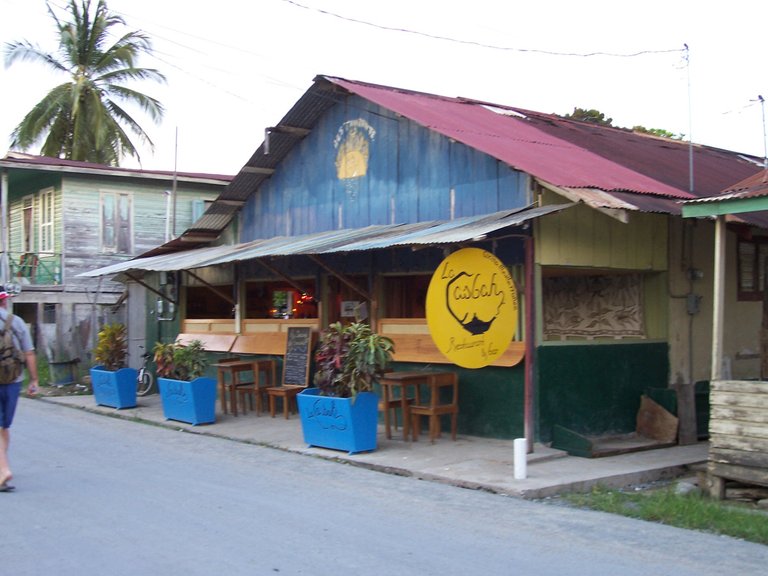
Here is the quote and I think it's great.
It's hard to leave Bocas del Toro. It's a terribly relaxing place, and at the same time it exudes a funky, romantic charm that has something untamed about it. The place is filled with colorful characters nursing drinks in dilapidated wooden bars or running rustic hotels on remote beaches. It's the kind of Caribbean hideaway one expects to find only in old Bogart films.
And it's just gorgeous...
Outside of Town
Still on Isla Colon, here are two photos of Paunch Beach. It is reputed to have some of the best surfing in this part of the Caribbean.

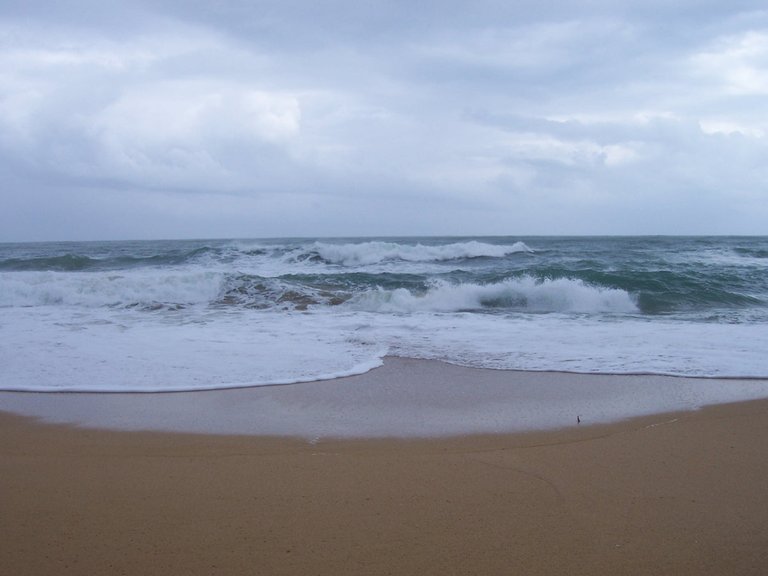
This is not the place for hotel chains and big box stores. The resorts inside of town and on other islands are owned by families and smaller investors, often Europeans and Americans.
In this photo, there's something I want you to notice. As the area gets so much rainfall, 3,458 millimetres (136.1 in) of rain per year, everything is covered. You see covered verandas, a covered eating area, and covered walkways from there to the two guest buildings.
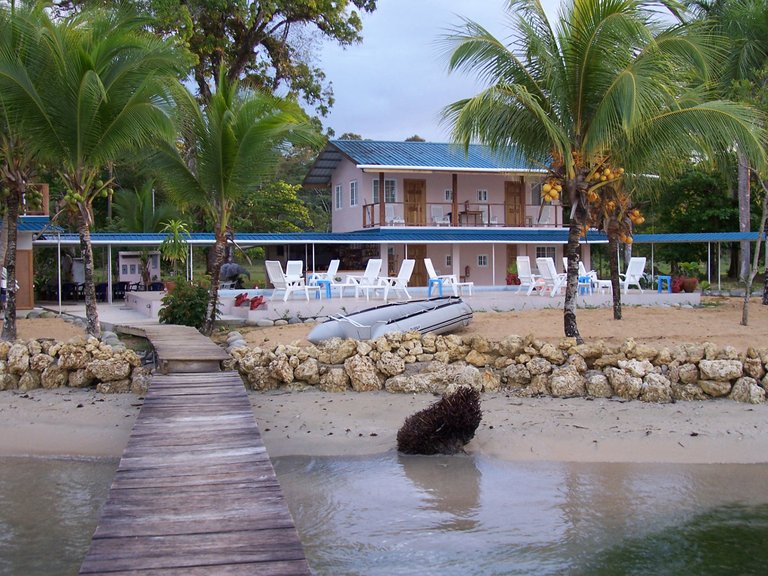
Here are some local tourist operators taking people out for day tours. Notice the boats. Due to the high amount of rain, boats have canopies. You might have thought it was to provide passengers with shade from the sun and rain, and it is, but a sudden downpour could also sink a boat. In the earlier water views of the town, there were roofs over the docks.
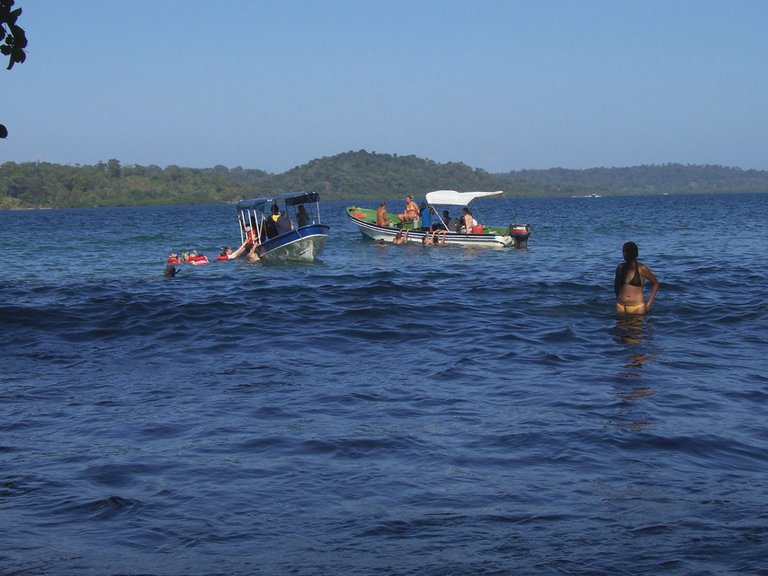
There are many activities to do in this year round vacation area. On a day tour, one of our first stops was at Isla Zapatilla, a beautiful tropical island. The well known Survivor television series was filmed here. (In the photo below, my head is the one on the left.) While sitting on the beach there, we discovered turtle eggs and left them alone.
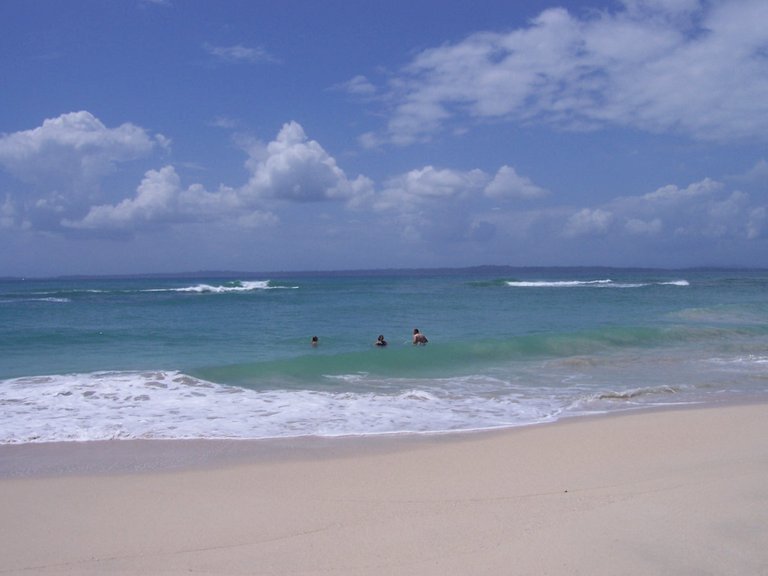
We snorkelled in several places including just off some mangroves, watching young fish darting amongst their roots. Here, we briefly stopped near Hospital Point on Isla Solarte. The hospital was built by the United Fruit Company in 1900 and while there is no longer a hospital there, don't worry, because there is one in Bocas Town. This particular spot is known for its good wall diving.
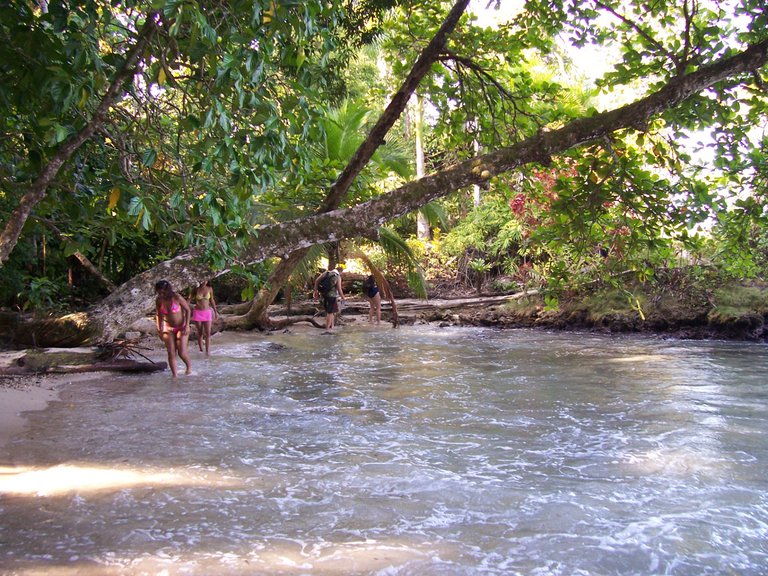
Lunch was at a restaurant, seemingly out in the middle of nowhere at the edge of the Isla Bastimentos National Marine Park.

The park, established in 1988, covers an area of 13,226 hectares (32,682 acres) of land and sea. It protects over four species of endangered sea turtles and 28 species of amphibians and reptiles, some which are endangered.
We placed our orders and went snorkelling again while lunch was prepared. One of the highlights was a small barracuda (9 kg or 20 lbs) swimming in the area. When prompted enough, the cooks would throw some chicken out the kitchen window into the water and we would watch as the barracuda struck!
We ate our lunch in this beautiful setting under the thatched roof while watching a small sailboat that used rice sacks for sails. There is always a very light warm breeze blowing in Bocas del Toro.
You can see that the water is clear. There is much to see either snorkelling or scuba diving in the area and the coral reefs are still in good shape. We tossed a little of our cooked rice into the water for the fish that gathered.

This is looking up into that thatched roof.
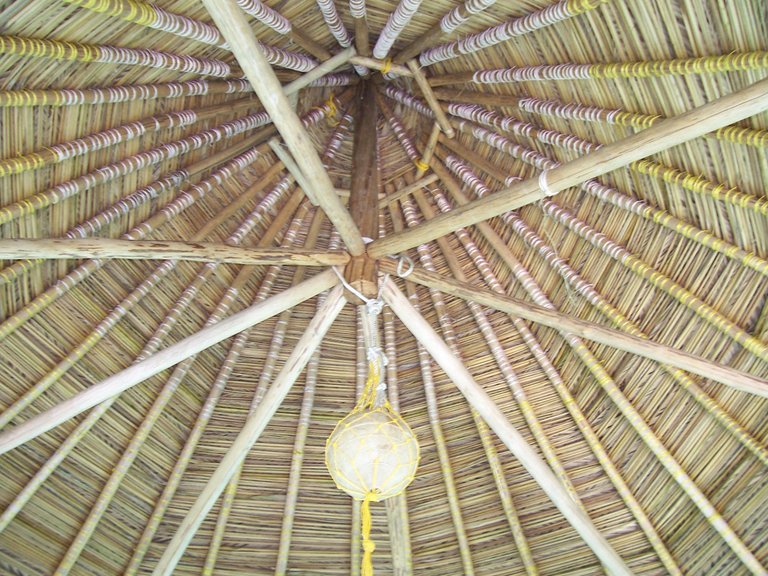
On another day, I met one of the local characters, Bibi, who drives a water taxi. He showed us this bar where the seats are all swings. What an ingenious sobriety test!
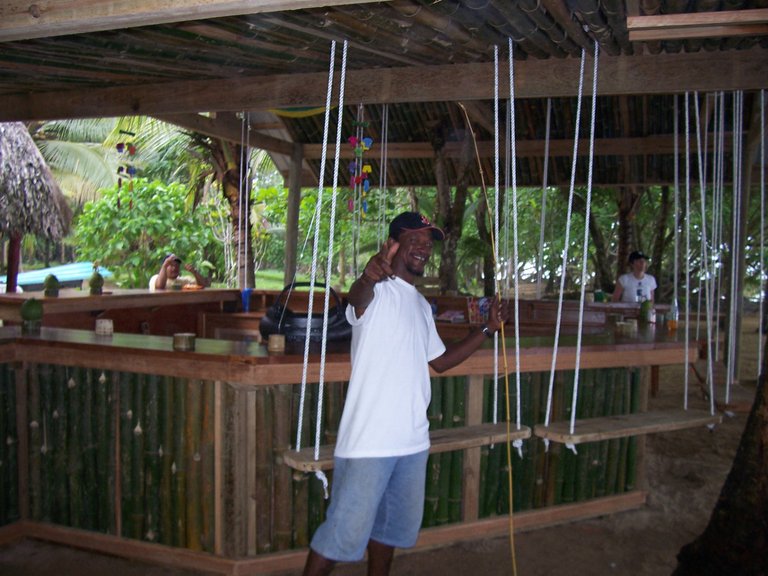
Did I mention this area is gorgeous? This is the Caribbean as it used to be. It's missing hordes of tourists, probably protected from overdevelopment due to its remoteness and lack of an electrical grid, but now this has become an asset. Sustainability, while once a necessity, means that the area, famed for its biodiversity, is getting a well-deserved reputation for eco-tourism.
They were right when they said it's hard to leave Bocas del Toro.
References
Bocas del Toro - the Official website of the Archipelago
Bocas del Toro history
Isla Bastimentos National Marine Park
Images

I hope you enjoyed my tour!
Photos taken on @kansuze's old Kodak C360. @kansuze
The Creative Crypto is all about art on the blockchain and learning from creatives like you. Looking forward to crossing paths again soon. Steem on!Hello @kansuze, thank you for sharing this creative work! We just stopped by to say that you've been upvoted by the @creativecrypto magazine.
Thank you for such an interesting and informative article!
I really liked the photo!
I also really liked the old wooden buildings with carvings!
They are beautiful, they evoke good emotions.
The sea and nature are magnificent!
You had a wonderful vacation!
Congratulations @kansuze! You have received a vote as part of @raserrano donation to this project. I will be able to help more #minnows
Thank you!
No prob I really loved your post and it just make me want to visit Bocas del Toro
Incredible write up @kansuze It sounds like quite the experience and an amazing place to explore. Resteemed with pleasure! 💙
Thank you! It's a great place.
Wow, you have been busy. It's been a few years since I stood on a Caribbean beach. Your pictures are calling me to it.
It's a ton of work putting a big post together but I was reliving every moment. :-)
You just planted 0.02 tree(s)!
We have planted already 3338.74 trees
out of 1,000,000
Let's save and restore Abongphen Highland Forest
in Cameroonian village Kedjom-Keku!
My Steem Power = 25449.57
Thanks a lot!
Thanks for sharing, it's some rare footage for me as I've never been to the american continent, and I'll probably start with south and central america as I identify a lot more to those places ! Canada and the USA are just a place of the diktat of capitalism, I don't want to generalize but it's a mostly like that (especially the USA). Anyway, did you manage to see that isthmus of Panama ? That is something that has always fascinated me from the time I learned about it in primary school. Some tiny piece of land between Pacific and Atlantic Ocean. Must be really impressing indeed. But there must be lots of sharks too. I guess it's dangerous to try and pass there. Panama is clearly for me the link between North and South America, in the middle of the Central America zone. Keep it up !
Congratulations! Your high quality-travel content caught our attention and has earned you a partial upvote. We love your hard work and hope to encourage you to continue to publish strong travel-related content. Thank you for using #travelfeed
Learn more about our travel project on Steemit by clicking on the banner above and join our community on Discord.
Thank you!